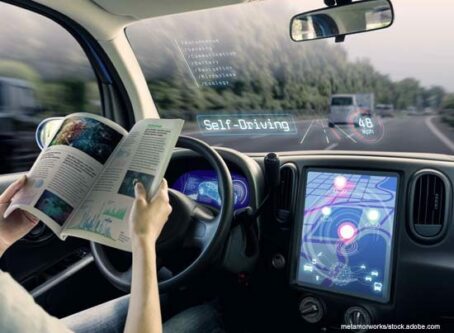From the cab: Freightliner’s autonomous truck
The Freightliner Inspiration truck drove itself down the winding road and across the historic concrete arch-gravity Hoover Dam on the evening of May 5. At that moment, the term “AV” was probably jumped 10 places on the industry’s list of buzzwords. Just remember, autonomous vehicle doesn’t mean driverless.
The driver is responsible for the safe operation of the vehicle at all times. The analogy referenced by Martin Daum, president and CEO of Daimler Trucks North America, was that of an aircraft pilot. He may be able to put his airplane on autopilot, but he’s always ultimately responsible for its safe and successful operation.
A few days later, I got the chance to go for a ride. While I had hoped to sit behind the wheel, piloting the truck is limited to a few drivers specially trained and certified to operate autonomous vehicles. I hopped into the passenger seat.
The driver, Director of Energy Efficiency Integration Chris Urban, took the truck out of the Las Vegas Motor Speedway lot and headed toward the highway. Once he was safely out of the parking lot, he engaged the Highway Pilot with the push of a button. Feet flat on the floor, hands off the wheel, I watched as the truck stayed in its lane. Traffic was light as we approached the highway entrance and, upon prompting by the truck, Chris resumed control.
We headed on to I-15 South and the Highway Pilot was re-engaged and once again the truck stayed in its lane in spite of pretty substantial cross winds. More vehicles around us caused no hiccups or hesitation in the smooth operation of the truck. Mirror cameras feed constant information about what’s going on outside, effectively eliminating blind spots. The seats were ergonomic and comfortable. As we prepared to leave the highway, control of the truck was turned back over to the driver and we returned to where we started.
So what would you do with time on your hands? Well, you can’t text and drive; you can’t read a book, take a nap, or get up and make yourself a ham sandwich. What you do is stay focused on the safe operation of the truck.
Just how much control does the driver relinquish? And the answer was simple and consistent. The driver is always responsible for the safe operation of the vehicle. So, just because the speed limit may be 25 or 75, that doesn’t mean it is safe or smart to operate there.
What it does…and doesn’t do yet.
At this time, the truck cannot read speed limit signs. That’s technology for the future.
How does the truck know which lane to use? For now, the truck travels in one lane. It does not change lanes on its own. Entrance to and exit from highways is controlled by the driver. It “reads” the lines on the highway.
How well does the truck determine a safe following distance? With adaptive cruise control, the truck will maintain a safe following distance, which can be as little as 2.3 seconds or as much as 5 seconds.
That opens the door for safe Highway Pilot platooning, where multiple trucks travel in a convoy. They’ve already tested it. With three trucks in a platoon, average fuel savings of 5.3 percent can be realized. With a five-truck platoon, average fuel savings increases to 6 percent.
What’s it like in challenging weather conditions? Can it be used in rain, snow, wind or fog? That’s still in the testing stages. And ultimately, like all driver tools, the discretion of the driver always comes first. Would you use cruise control on ice? Good judgment is key.









